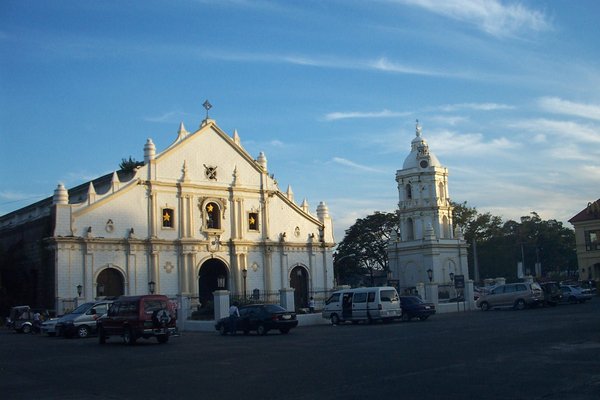Philippines
Vigan
The Historic Town of Vigan is the best-preserved example of a planned Spanish colonial town in Asia, tempered by Chinese, Ilocano and Filipino influences.
Vigan was founded as a trading town in 1572. Its town plan is of the traditional Hispanic checkerboard type. Most of the existing two-storey structures were built in the 18th-19th centuries when the town centre was settled by affluent families of mixed Chinese-Ilocano origin who conducted their businesses from their houses.
Community Perspective: Vigan is quite a remarkable oasis in a country where not many historic buildings are left, after centuries of earthquakes, fires and WWII. Get away from the main tourist street Calle Crisologo and enjoy the old houses with their Filipino/Chinese touches.
Site Info
Official Information
- Full Name
- Historic City of Vigan (ID: 502)
- Country
- Philippines
- Status
-
Inscribed 1999
Site history
History of Vigan
- 2016: Name change
- From 'Historic Town' to 'Historic City of Vigan'.
- 1999: Inscribed
- Inscribed
- 1989: Rejected
- Doesn't meet requirements
- Type
- Cultural
- Criteria
- ii
- iv
Links
- UNESCO
- whc.unesco.org
- Official
-
- vigancity.gov.ph — Vigan city
- Related
-
- vigan.ph — Vigan attractions
All Links
UNESCO.org
- whc.unesco.org — whc.unesco.org/
Official Website
- vigancity.gov.ph — Vigan city
Related Resources
- vigan.ph — Vigan attractions
News Article
- July 28, 2022 ptvnews.ph — Vigan sustains damages following strong tremor
Community Information
- Community Category
- Urban landscape: Colonial
Travel Information
Recent Connections
-
Camino Real
Philippine Camino Real -
Obelisk
Obelisk to commemorate conquistador Jua… -
Destroyed or damaged by Earthquake
July 27, 2022: "The quake brought damag…
Connections of Vigan
- Geography
-
-
Antipodes points
Vigan - Jesuit Missions of the Chiquitos -
South China Sea
-
Former Islands
-
- Trivia
-
-
Built or owned by Spanish
In 1574, [Juan de] Salcedo returned to the capital of his encomienda (trusteeship), Vigan, bringing with him his soldiers and some Augustinian missionaries to pioneer the evangelization of the Ilocos region. He established a Spanish city for the purpose of controlling the neighboring country. (wiki) -
Built or Owned by Chinese
Many of the structures in the Mestizo District along Calle Crisologo are "ancestral houses" built by rich Chinese traders ("Taipans"). The families later became creolised and took Spanish names -
On Passports
Philippine Passport -
Minority communities
Illocanos - mentioned by the AB
-
- History
-
-
Camino Real
Philippine Camino Real -
Fusion
Its architecture reflects the coming together of cultural elements from elsewhere in the Philippines, from China and from Europe
-
- Architecture
-
-
Vernacular architecture
the houses follow the typical plan of the tradional Bahay Kubo, with the second floor being the only living space. Most of the houses employ wood as one of the major materials in the construction. Ventanillas (lower sliding ventilators) only happen to manifest in the Philippines being a unique house feature.
-
- Damaged
-
-
Destroyed or damaged by Earthquake
July 27, 2022: "The quake brought damage to Cathedral of Vigan, one of the country’s oldest Augustinian churches."See ptvnews.ph
-
- World Heritage Process
- Religion and Belief
-
-
Cathedrals
Met Cat Conversion of St Paul
-
- Human Activity
-
-
Sea Ports
Historically played a major role in the commercial sea trade, "The Mestizo river was central to the development of the town in the 16th-19th centuries: large sea-going vessels could berth in the delta and small craft communicated with the interior." (AB ev)
-
- Constructions
-
-
Gates depicting Lions
Vigan's Archbishop's Palace: gates adorned with Chinese Lion Dogs -
Obelisk
Obelisk to commemorate conquistador Juan de Salcedo is in front of St Paul’s CathedralSee whc.unesco.org
-
- WHS on Other Lists
- Timeline
-
-
Built in the 18th century
The town was founded in 1572 on the site of a small pre-colonial village : "At the end of the 17th century a new form of architecture evolved, which combined the traditional construction with the techniques of building in stone and wood introduced by the Spanish...The seat of the Archdiocese of Nueva Segovia was transferred there in 1758, (and) in 1778, as a result of its expansion, it was renamed Ciudad Ferdinandina.... Vigan belongs to the 18th and 19th century network of Asian trading cities whose lifestyle and architecture blend Asian and western culture...It is the only enduring example of Spanish urban planning with authentic 18th, 19th and early 20th century architecture." (AB and Nom File)
-
- WHS Names
-
-
Name changes
From 'Historic Town' to 'Historic City of Vigan'.
-
News
- ptvnews.ph 07/28/2022
- Vigan sustains damages following s…
Recent Visitors
Visitors of Vigan
- Adrian Turtschi
- Alejandro Lau
- Ammon Watkins
- Atila Ege
- Bernard Joseph Esposo Guerrero
- Bill Maurmann
- Boj
- Bram de Bruin
- Carlo Sarion
- Carrascu
- Chole Ross
- Clyde
- CugelVance
- czesioszpachelka
- David Scott King
- delacec
- Dimitar Krastev
- Dylan
- Els Slots
- Erik Jelinek
- Errol Neo
- Fan Yibo
- Garrett
- Gary Arndt
- Harry Mitsidis
- henryjiao18
- Iain Jackson
- Jacob Choi
- Jeanne OGrady
- JL
- Jon Opol
- Joyce van Soest
- jxrocky
- Kjlauer
- Kurt Lauer
- lichia
- Loic Pedras
- Luis Filipe Gaspar
- Luke LOU
- Maciej Gil
- Mia esguerra
- Michael Turtle
- Mikan22
- Milan Jirasek
- Miloš Tašković
- Morodhi
- Nihal Ege
- Philipp Leu
- Philipp Peterer
- Randi Thomsen
- Reza
- Riccardo Quaranta
- S. Anril Tiatco
- Sergio Arjona
- sibariam
- Svein Elias
- Szucs Tamas
- Thomas Buechler
- Thomas van der Walt
- Vanessa Buechler
- Vernon Prieto
- voyager
- Wojciech Fedoruk
- Xiong Wei
- Zoë Sheng
- Zos M
Community Reviews
Show full reviews
Time of the visit: the 6th. till the 10th of dec.,2025.
Before I begin, I'd like to mention that I thoroughly enjoyed Vigan and nearby Paoay ( whs baroque church). Vigan's UNESCO World Heritage , combined with the Christmas season and everything that comes with it in the northern Philippines, was quite spectacular.
The countless religious processions and parades, the overflowing churches, the Christmas spirit that was palpable everywhere, the hospitable people who constantly wished you a Merry Christmas, the fantastic Christmas lights at night, the Disneyland-like Christmas market,the beautiful cathedral,the constant dance and music performances. Wonderful.
A visitor with a lack of time is able to see - superficially-most of Vigan within a few hours.
A quick glance reveals only one main tourist street and three pleasant main squares. Vigan's charm lies in appreciating the whole with ample time to explore. Everything is within walking distance. For weary visitors, there are countless motorized tricycles that will take you anywhere for just a few cents.
Vigan is located on the western coast of Luzon Island, in the province of Ilocos Sur, about 400 kilometers north of Manila.
- Founded in the 16th century, it was a major international port even before Spanish arrival in 1572. Under Spanish rule, it became a political, religious, and commercial hub for over 300 years.
- The city is a living museum of Spanish colonial town planning. Houses are built tight against the street, with ground floors used as shops/warehouses and upper floors as residences. The …
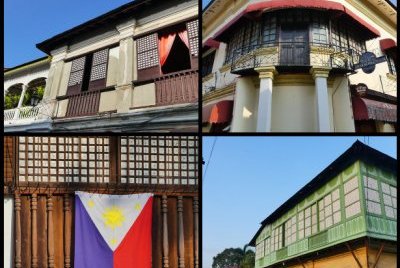
I visited this WHS in spring 2025 staying overnight after visiting the inscribed rice terraces. I agree that Vigan is a highlight in a country with not so many historic cities as well as probably the best-preserved example of a planned Spanish colonial town in Asia so it surely deserves its place on the WH list. However, it lacks the attention and the restoration efforts other Spanish colonial WHS were given in other continents and it suffers quite a lot from internal and continental overtourism.
That said, with some extra effort to visit early morning before all the souvenir shops open and before all the town comes bustling to life, I managed to enjoy the several historic buildings and its urban planning (including the usually crowded Calle Crisologo), keeping my eyes peeled for the Chinese/Ilocano influences such as the sliding windows/shutters as well as the Chinese statues on the Metropolitan cathedral or the Benedictine monastery facades. Some historic buildings worth visiting also for their interior are the Syquia Mansion Museum, the Crisologo Museum, and the Padre Jose Burgos House and National Museum. In each building or just outside there are metal UNESCO WHS inscription plaques, apart from the WHS Monument and plaque in Burgos street.
In the evening, it was fun to watch the Holy Week Procession with small statues after having experienced the much more pompous procession in Antigua Guatemala last year, while after trying different delicious delicacies which were sold at the several stalls around town. …
Keep reading 0 comments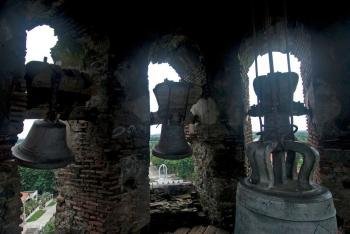
I visited Vigan in 2007.
Vigan is a Spanish colonial city located the north of the island of Luzon.
If you want to understand the link between the Philippines and Latin America, I'd suggest visiting Vigan. If it weren't for the people, you might think that you were in Mexico or another former Spanish colony in the Americas.
Automobiles are not allowed in the old part of town, so the historical parts are pedestrian only.
Read more about the Historic City of Vigan on my website.
Keep reading 0 comments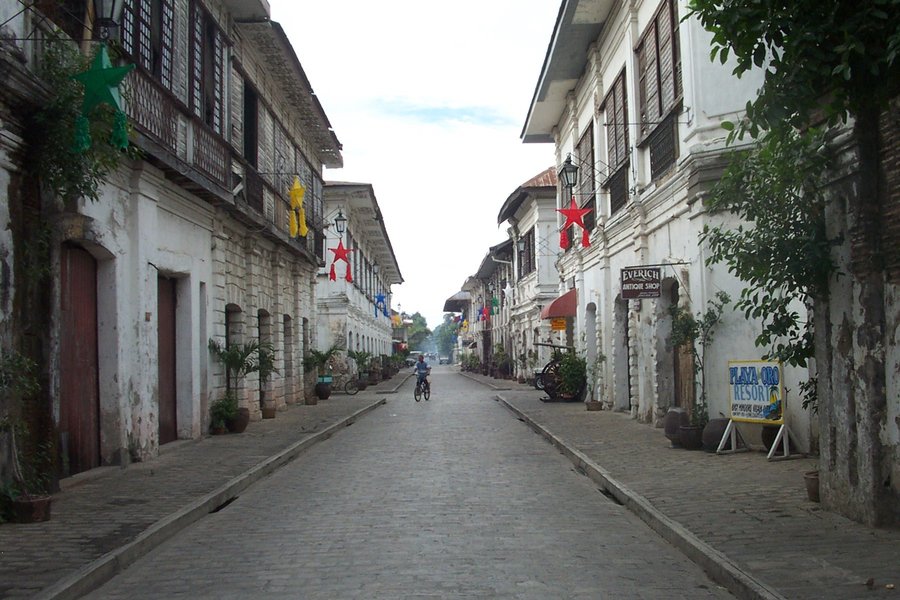
I'm not sure if my thoughts about Vigan can be included here because as much as I would like to but I have never been to this quaint "old world charm" town of the North. Although I have been to Taal Batangas and Pagsanjan in our country and Saint Augustine in Florida before which are all old colonial towns comparable to Vigan, unfortunately I have never had a chance to visit Vigan. My views about it are based on stories I got from my eldest sister who lived in up there for some years ( in the 1980's )and she even learned some Ilocano enough to understand and speak the dialect. I also have admired countless photos and read many articles and personal reviews of those who had the opportunity to see and experience Vigan. I believe Filipinos from all over should be aware and understand the priceless value of our only UNESCO World Heritage City in the Philippines because when we do regard it as such, it contributes to a strong sense of national identity and pride. Vigan may not be as spectacular as other well-preserved Spanish colonial towns found in Latin America but we must recognize that it is the only one of its kind in the entire country and perhaps in the whole of Asia. Some say that it is not Hispanic enough like those in Spain, others think it is in need of a major "facelift" or something but Vigan is unique and special as it …
Keep reading 0 comments
I visited Vigan just two weeks ago. My memory and impressions are overall indeed tilted to the positive side. I found it hard to articulate succinctly. Let me just give one point.
In terms of showing information relevant to the visitor clearly, Vigan probably does a marvellous task in one stroke, not often found in Asian towns of Vigan's size. The map produced by the city government is very understandable, helpful, nice looking, convenient. You don't even have to get a paper copy. At the intersection of Crisologo and Liberation there is a very clear map on a wall. Always get back to this intersection and you will find your way in Vigan.
Keep reading 0 comments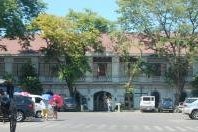
The reason why many people can't seem to appreciate Vigan is because they just zoom in to Calle Crisologo - forgetting that the the whole town is inscribed as WHS. I can't blame them though as even the local promotion of Vigan as a heritage site is only focused on that narrow street. In fact, it is one of the few towns where in the whole area is under the WHS inscription (others have specific areas - usually their old districts, some only have designated monuments such as churches and select old buidlings). So, how should Vigan be appreciated? The beauty of the trading town of Vigan is in the urban planning utilized in designing the place. It happens to be the best Spanish colonial planned town in Asia. Sadly, other parts of Vigan are neglected already and are not highlighted for their cultural heritage, and importance. Recently, there was the introduction of the Vigan River Cruise - though i have not yet personally tried this - that goes through the history of the town with presentations, cultural shows, and lectures. It is interesting to note that the cobblestone street of Calle Crisologo is already a reconstruction - the stones were dug under 3 layers of modern concrete streets and later on put together again to make the present old pathway; and that the Meztizo District's old colonial houses (which you must admire in quantity! don't have foundations - so, if you were superman, you can literally push all of …
Keep reading 0 comments
I visited Vigan, Ilocos Sur, Philippines in February 2006 with my classmates in doctoral class. It was an exhausting trip from Bicol Region to Vigan. The ancestral houses were located in one block. The governor preserved the heritage houses. This site is frequented by the tourists. Coaches pulled by horses are used when strolling the area. It was really a good experience actually seeing the site.
Keep reading 0 comments
One will never know what it is like to be a Filipino until one has visited historic Vigan. I have lost count of the many times I have traveled to Vigan, but my enthusiasm for this charming town has never waned. This Christmas 2008, my visit is tinged with nostalgia because I am traveling only with my three granddaughters, whose last visit was 7 years ago.
About 400 kilometers from Manila is the UNESCO World Heritage Site of Vigan. On 2 December 1999, this historic town was inscribed in the World Heritage List as the best-preserved example of a planned Spanish colonial town in Asia with a unique European atmosphere. In the Philippines, it is the oldest surviving Spanish colonial city in the Philippines.
On the first day of our Christmas holiday tour, we revisited several landmarks and interesting places around the town on a horse-drawn calesa: the old Bantay Church and its famous belltower, the Pagburnayan (stone jar-making factories), the Hidden Garden in a remote barangay, Crisologo Museum, and the old streets in Mestizo District leading to Plaza Burgos and Plaza Salcedo.
The Shrine of Nuestra SEÑORA de la CARIDAD in Bantay is home to the venerated our Lady of Charity, patroness of Nueva Segovia. Built in 1591, the church features earthquake baroque and Gothic-influenced architecture. Its belfry located a few meters away was used as a lookout point, and the site was a favored location for many local films.
At the Pagburnayan, we witnessed a demonstration of the …
Keep reading 0 comments
Visited Vigan last March (2009). The city is about two hours from Laoag - the capital of Ilocos Norte.
The Cordillera Inn along Calle Crisologo is highly recommended. They have cozy rooms and friendly staff. Plus, you'd be staying in one of the old heritage houses.
The calesa ride is 150Php for an hour. The driver can take you anywhere in town. Usually, the drivers would recommend going the Baluarte (a small zoo) but I found the place rather disappointing. Stick to the ancestral houses.
In school, Vigan was compared to other historic towns in the country - Pagsanjan, Laguna; Intramuros and Taal, Batangas. The latter two were rejected for inclusion in the Heritage List. I wonder what the specific reasons were and if it is possible to submit Pagsanjan town, too.
Keep reading 0 comments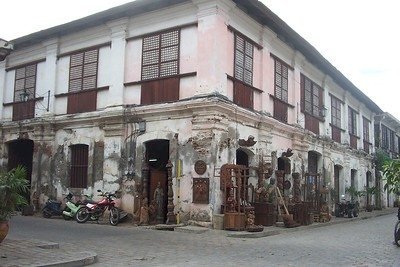
The inscription of Vigan as a WHS was rejected earlier, in 1989, because it couldn't compare with Spanish colonial cities like Cartagena (Colombia) and Trinidad (Cuba). I haven't been to those two places, but I've seen many other Latin American colonial towns. Like those, Vigan has the checkerboard street plan, the central plaza (even two of them) and the cobbled streets (well, one street).
Although it's not spectacular on the Spanish-colonial scale of things, Vigan is quite a remarkable oasis in the Philippines. In general, not many historic buildings are left, after centuries of earthquakes, fires and WWII (the latter has been very harsh on the Philippines). Here in Vigan, they've decided to save whatever is left. The historical buildings are in various states of (dis)repair, but their ensemble has a great atmosphere (added by sealing one street off for motorized vehicles). As the ICOMOS report remarks, Vigan should actually be compared with other Asian colonial trading cities like Hoi An, Malacca and (the more brightly painted) Macau.
One of the joys of Vigan is its old villas (mostly dating from the 19th century), which are open to visitors. You can even stay at one (Villa Angela), which I did and can only recommend. One really feels like the lady or the lord of the manor there, sitting, eating and sleeping on furniture that you normally aren't allowed to touch in a museum.
Keep reading 0 comments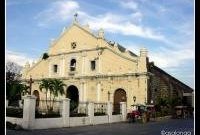
My first trip to visit historic northern city was with a group shutter bugs from a local photography club. Unfortunately for us, we had a small incident with 2 drunk particiapnts and apparently, we made quite a 'scene' in the town. ;o)
Vigan is neither imperial nor grand. And to be honnest, the houses (its main WHS draw) are rather stark compared with the more flamboyant ones found in other historic towns across the Philippines. This is a reflection of local Ilokano culture- a group of people known not exactly for being fanciful but more for being frugal.
But what makes Vigan unique is the concentration of Hispanic influenced (with Asian details) period houses perhaps unmatched anywhere else in the country. I particularly liked the pastel-colored Spanish-colonial cathedral ith Chinese lions and a pagoda-inspired bell tower(above) facing the main plaza fronting an American-colonial government house. The town is small enough to be explored in a day and the nearby Santa Maria church (another WHS) provides for an excellent day trip.
Of course, a trip that lasts more 10 hours (thats the distance it takes to drive from Manila) should be worth more than that and it is! The excellent views of the South China Sea meeting the town's Abra river is stunning. As are the beaches further north (Pagudpud), the time-worn churches (including another WHS- the Paoay Church) and Marcos memorabilia are what makes the Ilokos province a gem of a place.
Keep reading 0 comments
The most enjoyable part of visiting Vigan was riding around in a horse-drawn calesa past all the old crumbling buildings. At one point were were held up by a noisy and colourul funeral procession. The calesas were not expensive either.
Vigan was also handy for visiting two of the churches, at Paoay and at Santa Maria
Keep reading 0 comments
